Muscle Spasms
What are Muscle Spasms?
Muscle Spasms also known as muscle cramps, spasms happen when your muscle involuntarily and forcibly contracts uncontrollably and can’t relax. These are very familiar and can involve any of your muscles. They can include a region or all of a muscle, or several muscles in a group.
The most familiar locations for muscle spasms are the calves, thighs, hands, feet, arms, and abdomen. When happening in the calves, particularly, such cramps are called Charley horses. A leg cramp that occurs at night when you’re at rest or asleep is known as a nocturnal leg cramp.
What causes muscle spasms (muscle cramps)?
Idiopathic means that the actual reason is unknown, and that’s the issue with muscle spasms. Some specialists think that one or more of the following may be to blame in most circumstances:
- Not sufficiently stretching.
- Muscle fatigue.
- Exercising in the heat.
- Dehydration.
- Depletion of electrolytes (salts and minerals such as magnesium, potassium, and calcium in your body).
- Involuntary nerve releases.
- Restriction in the blood supply.
- Stress.
- Too much high-intensity activity.
Possible reasons for nocturnal leg cramps (leg cramps at night), especially, contain:
- Sitting for long periods.
- Overusing the muscles.
- Standing or working on concrete bottoms.
- Sitting improperly.
What are the symptoms of muscle spasms (muscle cramps)?
Not all muscle spasms are aching, but some can generate pain. It can sense as though the muscle is jumping or moving on its own, with this feeling generally staying simply a few seconds. Some patients might even be capable to notice the muscle twitching.
Occasionally, it can feel as though the whole muscle has cramped up and cannot move. This outcome most generally occurs in the legs, and it can be particularly painful. The muscle may sense hard to the touch. While the cramping sensation manages to pass within several minutes or so, the muscle may continue to harm for some time afterward.
If a muscle spasm is an aspect of a neurological health disease, the patient will generally experience further symptoms. These might contain:
- pain in the neck, back, or head
- weakness in the muscles
- skin numbness
- a pins-and-needles sensation
- a tremor
- paralysis
- poor coordination
- slow motions
- double vision
- sleep issues
Who is at risk for muscle cramps?
Anyone can obtain muscle cramps, but they are more familiar in some patients:
- Older grown-ups
- A patient who is overweight
- Athletes
- Pregnant females
- Patients with specific medical diseases, like thyroid and nerve diseases
How are muscle spasms diagnosed?
No examinations are routinely done. Rather, testing is done established on the record and outcomes of the physical test.
If cramping is overall, especially if reflexes are overactive, doctors or physician estimate levels of blood sugar and electrolytes (involving calcium and magnesium) and do blood examinations to study for kidney malfunction (which can generate levels of calcium and magnesium to be abnormal).
If the cramped muscles are too weak, electromyography may be accomplished. For this examination, a small syringe is inserted into a muscle to document the electrical activity of the muscle when the muscle is at rest and when it is contracting.
If muscle weakness is overall and doctors or physicians believe that it is related to an issue with the nervous system, magnetic resonance imaging (MRI) of the brain and spinal cord is done.
How are muscle spasms (muscle cramps) treated?
If a disease that can cause muscle cramps is specified, it is managed.
If a cramp happens, stretching the involved muscle frequently reduces the cramp. For instance, for a calf cramp, the patient could use a hand to drag the foot and toes upward or could do the runner’s stretch. Massage may temporarily ease some kinds of cramps.
Most of the medications specified to control cramps from recurring (involving magnesium carbonate, calcium supplements, and benzodiazepines like diazepam) have not proved to be useful, and they can have side effects. Quinine is no longer suggested as a treatment for muscle cramps because of its side effects, like vomiting, abnormal heart rhythms, ringing in the ears, vision issues, and headaches. Mexiletine (used to manage abnormal heart rhythms) occasionally assists but also has many side effects, like vomiting, nausea, tremors (rhythmic shaking of a body region), and seizures.
Physiotherapy treatment
Physiotherapy can assist with muscle spasms via various techniques of treatments. These can be purposed at managing the symptoms and the reason (if there is an underlying injury). Physiotherapy treatment can assist to reduce the tension in the muscle and provide pain relieving techniques.
Stretching
Stretching the site that has the muscle spasm can generally assist enhance or stop the spasm from happening. Below are stretching for the muscles in your thighs, calves, back, and neck.
4 stretches for calf muscle spasms
To do the first stretch:
Lie down, in a supine position stretching your leg by pointing or dragging your toes toward your head. (Pointing the toes toward you is known as dorsiflexion.)
Maintain for a few seconds or until the spasm endings.
You can also utilize a strap or belt looped near your foot to slowly drag the top of your foot toward you.
This also functions as a hamstring muscle spasm.
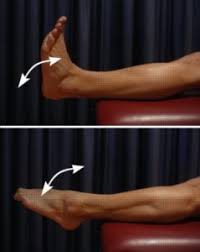
Other stretches to do:
Stand and place your weight on the cramped leg, flexing your knee barely.
Stand on your tiptoes for periodic seconds.
Lunge ahead with the leg that isn’t cramped, maintaining the cramped leg erect.
Stretch for thigh spasms
Stand and keep on to a chair for balance.
Flex your leg at the knee and get your leg backward from the hip.
Maintaining your ankle, drag your foot up after you toward your buttock.

4 stretches for back spasms
The first and most straightforward manner to stretch a back spasm is to walk everywhere, which can reduce your back muscles and ease a spasm. Walk at a gradual, stable pace to relax your back muscles.
Tennis ball stretch:
Lie down on the bottom of a bed with a tennis ball in a supine position (or another small ball) beneath the site with the spasm for a few minutes.
Attempt to soothe and breathe normally.
Roll the ball to an adjacent spot and recurrence.

Foam roller stretch:
Lie on the bottom in a supine position with a foam roller perpendicular to your spine.
Move your back over the roller, up to your shoulder edges, and down to your stomach button.
Maintain your arms scratched on your chest.
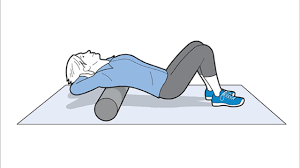
Exercise ball stretch:
Sit on an exercise ball and lie back, so that your shoulders, back, and buttocks are extended out on the ball, with your feet flat on the bottom. Accomplish this with a chair or couch so that you can maintain one if you lose your balance.
Lie lengthened out for some minutes.
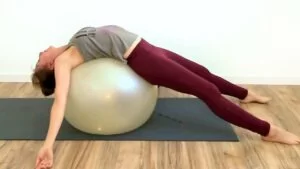
Stretch for neck spasms
While sitting or standing, rotate your shoulders by moving your shoulders forward, back, up, and down. Reprise this movement 10 times.
Then move your shoulders in the opposite path by rolling your shoulders back, forward, up, and down. Recurrence 10 circles in this direction.
You can conduct shoulder rolls anywhere, while sitting in a vehicle, at a desk, or if you’re standing in line someplace waiting.
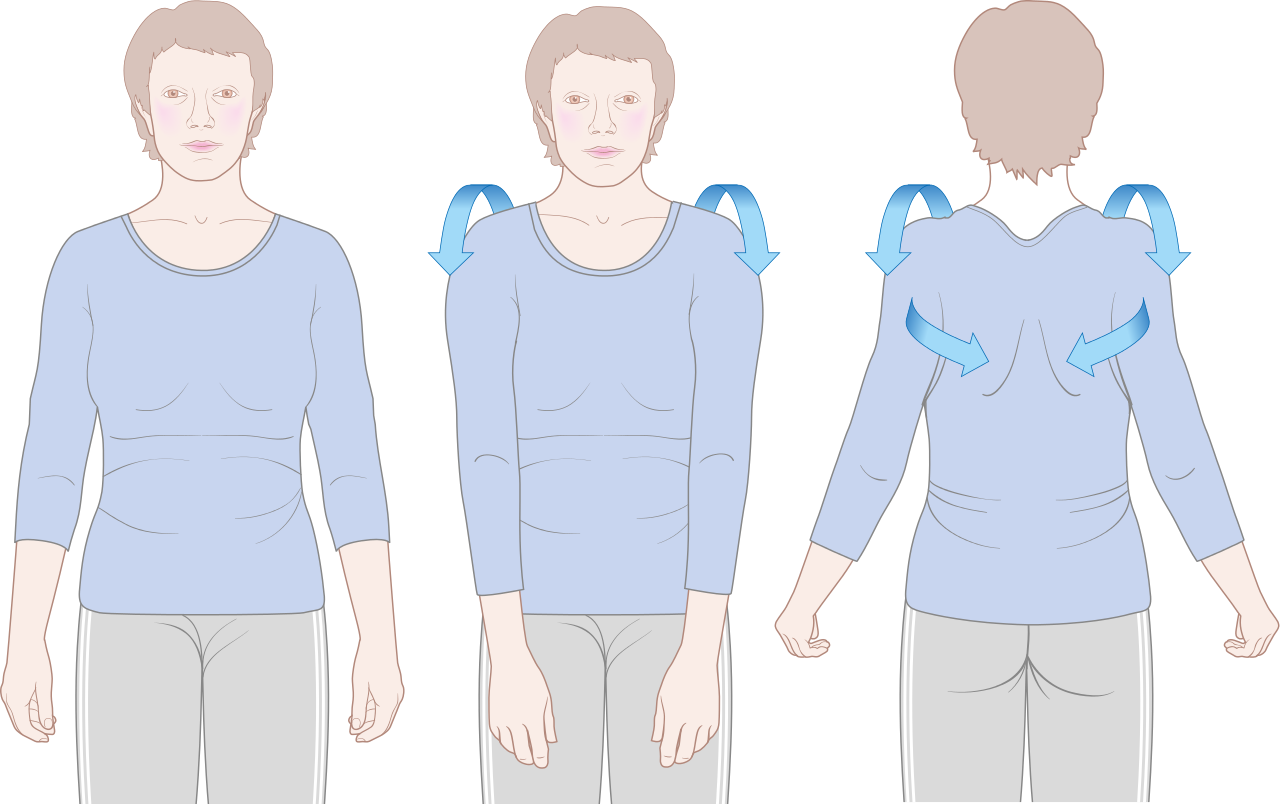
Massage
Massage can be an excellent way to ease physical aches and muscle cramps.
Gently massage the muscle that’s in spasm.
For a persisting back spasm, attempt pinching the region near it hard and maintaining the pinch for a few minutes. You may require someone else to do the pinching if you can’t get the location.
Ice or heat
Managing pain and spasms with hot or cold treatment can be particularly useful.
For a constant spasm, use an ice pack on the muscle for 15 to 20 minutes at a time, sometimes a day. Create sure to cover the ice in a light towel or cloth so that the ice isn’t straight on your skin.
A heating pad on the location may also be useful for 15 to 20 minutes at a time, but obey this with an ice pack. This is because while heat senses good for aches, it may aggravate inflammation. Ice will soothe the inflammation.
Further heat options contain a hot shower, a warm bath, or a hot tub or spa if you have access to one, which can assist soothe your muscles.
Hydration
When you own a spasm, attempt drinking some water.
To assist control spasms, make certain that you remain hydrated, particularly if you’re exercising or if the weather is hot.
While suggestions for how much water you should drink differ based on items such as your requirements, lifestyle, activities, and climate, here are some pieces to go by.
Mild exercise
Some patients see that they can ward off leg spasms at night (which can happen in up to 60 percent of grown-ups) by doing a little light activity before they go to sleep.
Some instances of light exercise contain:
- jogging in place
- walking up and down a set of stairs
- riding a static bike for a few minutes
- using a rowing device for a few minutes
- bouncing on a trampoline
While light activity can assist, moderate or intense activity can impact your sleep, so you’ll want to avoid it right before bed.
Nonprescription remedies
There are several items you can carry by mouth that may assist with your muscle spasms:
NSAIDs. Over-the-counter (OTC) also called nonsteroidal anti-inflammatory medications (NSAIDs) frequently get eased by decreasing inflammation and pain.
Pickle juice. Drinking a small quantity of pickle juice reportedly eases cramping muscles within 30 to 35 seconds. This is believed to work by recharging electrolyte balance.
Supplements. Vitamin B-12, salt pills, and magnesium supplements are used by some patients to manage and control muscle spasms. It’s essential to mention that there’s limited proof to show that these are useful.
Natural muscle relaxers. Natural muscle relaxants contain adding capsaicin to foods, drinking chamomile tea, and enhancing your sleep.
Topical creams. that are anti-inflammatory and pain reducing
Over-the-counter pain-reducing creams may assist. These contain products that include camphor, lidocaine, or menthol (for instance, products by Tiger Balm and Biofreeze).
Emollient gel created from Curcuma longa (turmeric) and celery seed reportedly assist reduce the ache and inflammation of a muscle spasm.
Hyperventilation
A 2016 study article on spasms documented an observational analysis with three participants who used hyperventilating at 20 to 30 breaths per minute to determine exercise-related cramps.
Hyperventilation is when you breathe harder and quicker than normal. If you have fear, hyperventilation may not be the right option for you, as it can cause feelings of panic.
Prescription medication
If you have a persisting muscle spasm, particularly if it’s painful, your doctor or physician may specify a muscle relaxant or a pain drug.
Muscle relaxants used for muscle spasms are known as centrally acting skeletal muscle relaxants (SMRs) and are frequently only defined for 2- to 3-week periods.
Prevention
The proof is varied about the efficacy of remedies for controlling muscle spasms.
If you’re commonly healthy and have periodic muscle spasms, experts suggest the:
remaining hydrated
doing light stretching before and after your workout
eating a nutritious diet
Using kinesio tape or compression stockings may assist to control muscle spasms in your legs, according to a little analysis on runners.
You may want to maintain a history of when you reach a muscle spasm, to notice if it’s related to a certain movement. Switching that movement may assist to control future spasms.
For instance:
Do you obtain a back spasm after you’ve been reading on a mattress?
Do your legs cramp if you’ve been sitting or standing in one spot for a long duration?
Do wearing tight shoes or high heels conduct toe cramps?
What position have you been resting in?
Responding to these questions can assist you to figure out what might be activating your muscle spasms.
FAQ
What does a muscle spasm feel like?
Muscle spasms can sense such as a stitch in the side or agonizingly aching. You may notice a cramp beneath your skin and it may sense stiff to the touch. Spasms are spontaneous. The muscles contract and it brings to therapy and time for them to calm down.
How long does a muscle spasm last?
Spasms can stay anywhere from a few seconds to 15 minutes or more extended. They’re most familiar in the feet, hands, thighs, calves, and back. Some spasms can be a mere irritant, while others can be extremely painful and noticeable.
Is a spasm serious?
Muscle spasms, twitches, and cramps are not generally a reason for concern. They are completely normal, especially in athletes and other patients who exercise daily. In some circumstances, yet, they can demonstrate an underlying health disease, like thyroid disease, multiple sclerosis, or cirrhosis of the liver.
What if a muscle spasm doesn’t stop?
For a continuous spasm, use an ice pack on the muscle for 15 to 20 minutes at a time, a few times a day. Create sure to cover the ice in a delicate towel or cloth so that the ice isn’t straight on your skin. A heating pad on the site may also be useful for 15 to 20 minutes at a time, but observe this with an ice pack.
What deficiency causes muscle cramps?
Vitamin D and Calcium Deficiency are the prime causes to induce muscle cramps and joint pains. Each of us needs to know our vitamin levels in the body so that therefore we can carry supplements, and certain nutrients to our diet and most notably if needed, seek medical assets.

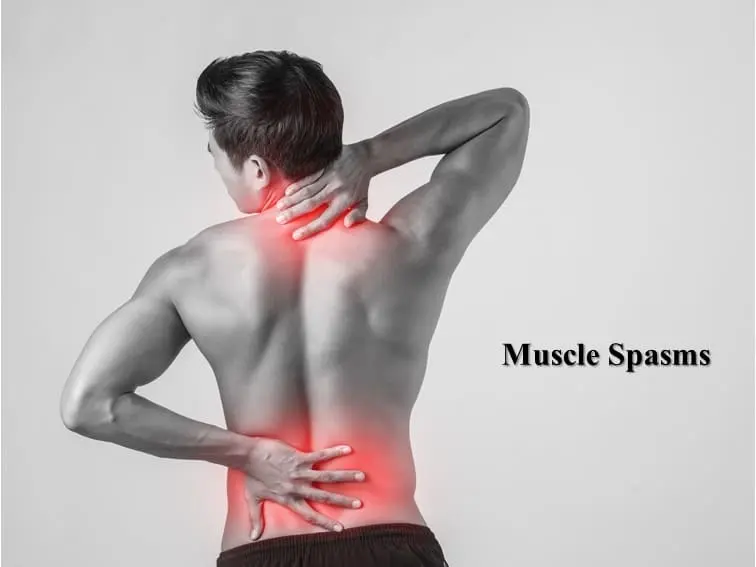
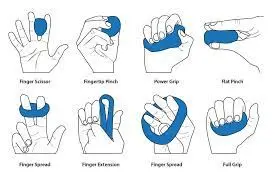
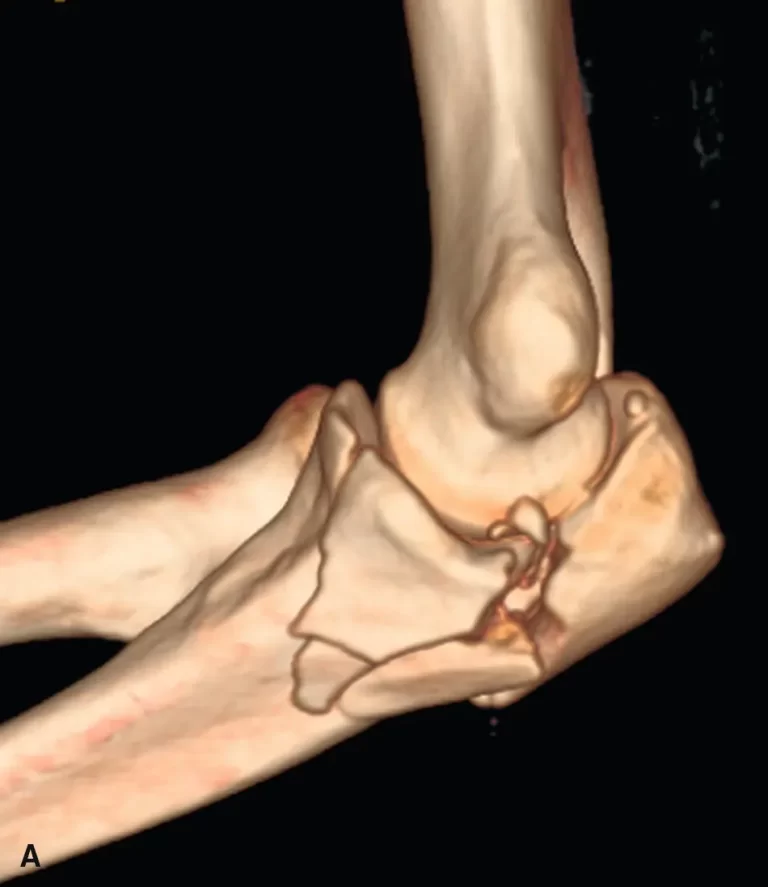
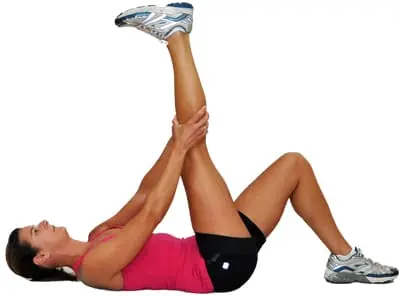

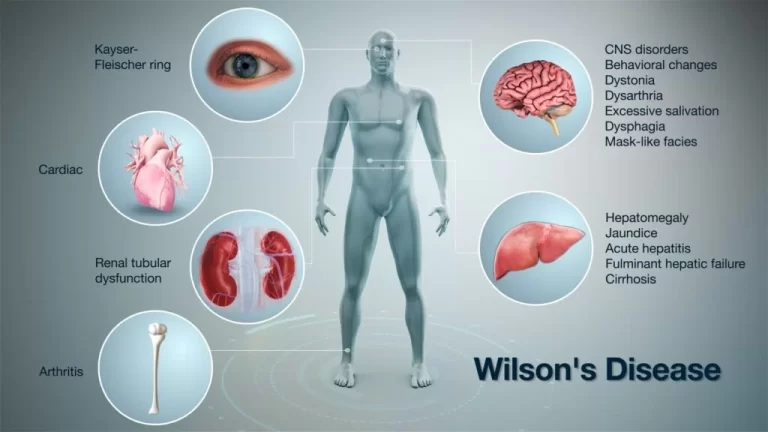
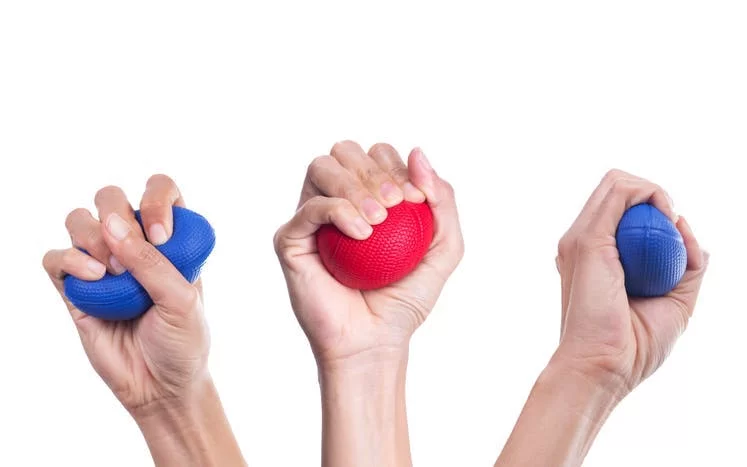
40 Comments